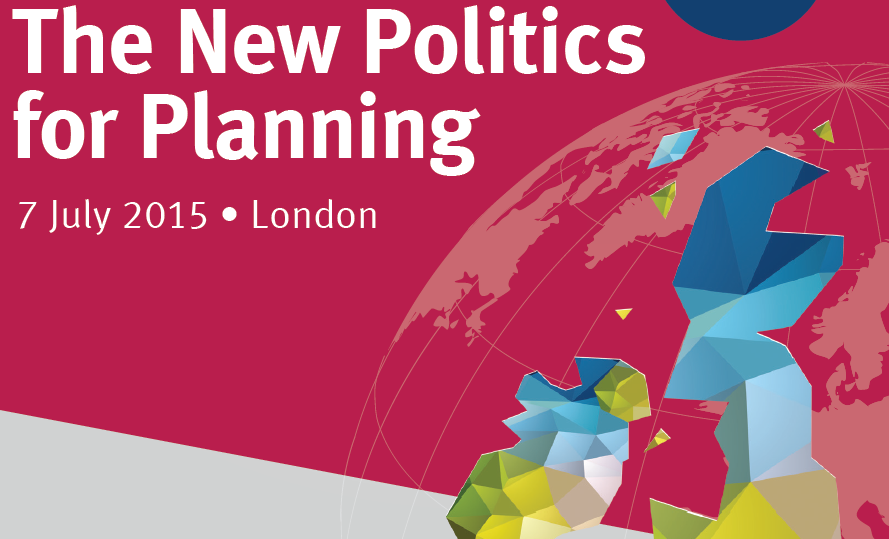 The 2015 RTPI Planning Convention was held last week and was attended by over 450 people keen to discuss the future of the profession and the planning system following the UK general election. Just two days after the conference, the government published its ‘productivity plan’ setting out wide-reaching changes to planning, and highlighting the importance that is being placed on planning as a channel (or barrier) to economic growth.
The 2015 RTPI Planning Convention was held last week and was attended by over 450 people keen to discuss the future of the profession and the planning system following the UK general election. Just two days after the conference, the government published its ‘productivity plan’ setting out wide-reaching changes to planning, and highlighting the importance that is being placed on planning as a channel (or barrier) to economic growth.
While Idox were at the conference exhibition in order to demonstrate the new i-Apply combined online planning and building control submissions service, our Knowledge Exchange team were at the convention itself.
A call to arms
During the day there were a range of sessions exploring the delivery of planning at different spatial scales as well as the need for planners to engage with other professions and policy areas. Janet Askew, RTPI President, argued that we “must persuade people that planners are good for places” while Eugénie Birch issued a rallying call, saying “we have a chance to advocate, a chance to be bold”.
Probably the session that created the most buzz was Waheed Nazir describing the journey that the planning team in Birmingham City Council have been on. The need for strong, visionary leaders within the profession, echoes the conclusion of a recent OECD Forum on local economic development which explored the new skill set needed to be a good local leader.
Waheed suggested that “process has overtaken the creativity of the profession”. Planners need to “liberate themselves from well-intended bureaucracy”. In terms of providing leadership, two key aspects are setting the vision and then enabling delivery. By trusting staff and empowering them to deliver the agenda which had been agreed, Waheed felt that they had been able to do things which wouldn’t have been possible otherwise. The Curzon masterplan and Birmingham’s Big City Plan were showcased as examples.
New ways of planning
In the afternoon, the practicalities of current planning were explored in sessions on strategic planning and neighbourhood planning. Neighbourhood planning was identified as a powerful set of tools but audience questions suggested some disquiet. Neighbourhood plans, where they are being developed, seem to support stronger community identity but are still operating in their own bubble. As the spatial scale increases, the level of public participation in planning decreases – so the learning from neighbourhood plans needs to be fed back into Local Plan development.
Planning for our children’s children’s children
In terms of strategic planning sessions, there was a big emphasis on thinking long term. Pam Ewen talked about whether we do enough long term, strategic thinking. Do we think big enough or take enough risks? We don’t just create planning documents as an end in themselves – they are investment and marketing tools to galvinise action. Reflecting on the theme of leadership, Pam also highlighted the need to see developing a strategic plan as a project in its own right; clear direction, objective and communication were vital to the plan’s success.
This was echoed by Richard Blyth who also emphasised the need for cross-boundary cooperation, which brings mutual benefits and the need for greater collaboration across housing, health and education.
Challenges for the profession
The final session looked at the politics and challenges facing the profession. Michael Edwards highlighted that planning is a profession committed to serving the whole of society. Planners have to work within the policy framework, but take account of the wishes of society and strive to reflect on the good and bad plans and outcomes.
Leading the placemaking agenda
Overall the day tied planning into wider cross-cutting issues such as sustainability and wellbeing. Vincent Goodstadt, a past President of the RTPI, summed up when he said we “need a broader, proactive view of planning to help maximise its economic and social value”. What was surprising therefore was how little reference was explicitly made to devolution.
If the planning profession is really to lead and shape the debate on the future approach to place-making then this needs addressed. Otherwise the risk is that riding on the coat-tails of the economic agenda (especially when the government is inferring in its reforms that we need ‘less planning’ to enable growth) may take the planning system in a direction that planners would rather not go.
Share
Related Posts
By Ian Babelon A new-old concept for proximity “Are we there yet?” Parents may patiently nod to their children’s insistent nudges on a 20-minute journey to… somewhere. Quite rightly, researchers have asked: twenty minutes to what? The answer may well ....
Following the adoption of National Planning Framework 4 (NPF4) at the end of February, the Scottish planning system and planning services are dealing with transitioning to a development plan system without statutory supplementary guidance and where the relationship to current ....
By Ian Babelon In the first part of two blog posts, published on 22 May, Ian Babelon provided examples of good practice in retrofitting social housing. The second part of this blog post looks at estate-wide and area-wide social housing ....

